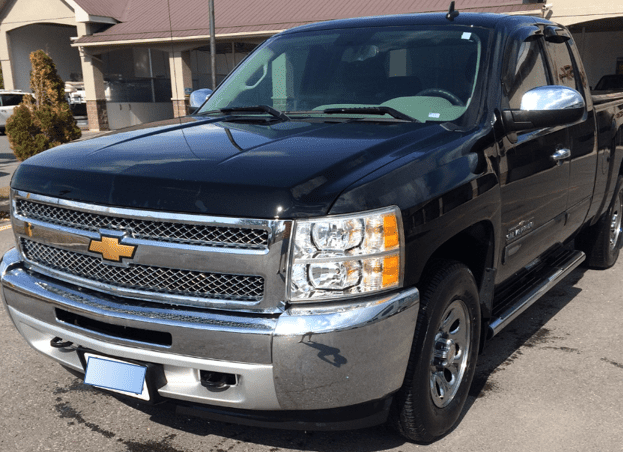There are many paths to achieving financial independence. The FIRE (Financial Independence/Retire Early) community advocates spending far less than one earns in order to put the difference into investments that churn off regular cash flow. This genre has been a great source of wisdom to help me push toward reaching my own goal of achieving financial independence (FI). While I do not desire to retire early, I believe it is a worthwhile pursuit nevertheless to have a target and shoot for it in terms of FI.
As an investor, I identify primarily as a dividend growth investor (DGI). I focus my investment dollars on high quality companies with a solid track record of increasing their monthly or quarterly payments to investors. Back in 2016, however, I decided that it was time to start tracking my progress and setting goals. It was all fine and good that I felt I was on the right track, but how could I know whether my targets were being met if I didn’t actually have any?
Table of Contents
My Five Year Plan
Understanding that I needed to figure out what my earnings and expenses were in order to optimize them, I established my Five Year Plan which was to be the measuring stick which would be my guide from late 2015 through 2020.
Income
On the income side of the equation, I developed a table with annual projections in terms of passive income (dividends + interest). In the table below I show what I had projected and also included the final column (“Actual”) which displays what I actually earned for the stated period:
| Year | Age | Annual - Projected ($) | Annual - Actual ($) |
|---|---|---|---|
| 2015 | 28 | 2,000 | 2,191 |
| 2016 | 29 | 2,500 | 2,713 |
| 2017 | 30 | 3,100 | 3,341 |
| 2018 | 31 | 3,700 | |
| 2019 | 32 | 4,400 | |
| 2020 | 33 | 5,100 |
To this stage, I have been trending well above my expectations in terms of passive income. This is a result of the three methods to growth as a DGI:
1) Reinvesting dividends earned.
2) Organic increases in the form of dividend raises by companies owned.
3) Additional capital deployed. This is the money that gets put aside and is the difference between income and expenses.
Having noted this, let’s take a look at the expense-side of the equation.
Expenses
As part of my fixed monthly costs, I listed nine expenses. The largest was my rent which at the time was $742 (it has now crept up to just over $780). The second largest expense was my bi-weekly truck payment for my 2012 Chevrolet Silverado (from General Motors Company (GM)) which rang the register every two weeks for $260. I am pleased to announce that I made my final truck payment at the end of August which also means I am entirely debt free from all sources. Cause for celebration, no doubt.
One of the key tenets of personal finance (or finance in general, truly) is that cash flow is king. This is why as part of my financial plan I targeted August or 2018 as the sweet spot where I would suddenly see a large drop off in expenses with ~$560 per month (260 x 26 / 12 = ~$560) going back into my pocket rather than being diverted to a truck payment. As a true advocate for achieving FI rather than being a mindless consumer, my plan now is to actually use that extra income to supercharge my investments. Properly and effectively deploying capital is the key to winning the game of money. Lifestyle inflation is a serious threat and is to be guarded against if a person is serious about getting ahead financially.
Background and Why I Bought New
Back in August 2012, I made a conscious, deliberate decision to purchase my truck brand new. I was well-versed with all of the reasons why buying second hand makes sense. I knew that 20-30% can potentially be lost immediately as the new vehicle rides off the lot. I knew that there are plenty of mark-ups on ticket price before the “discounts” get applied. I knew all of that and still decided to move forward for a few simple reasons:
1) I am not a mechanic and have no reasonable way to really know whether a second hand vehicle is well maintained or whether it is a lemon.
2) I was planning to own the vehicle for the next twenty years and so over time I would reap the benefit of having a well-maintained one-owner vehicle so long as I took care of it. I have certainly done that.
3) In Canadian winters, there are times when the snow is several feet high, the temperature hits -40 degrees Celsius, and other challenging conditions. I wanted the comfort of knowing I owned a vehicle that could handle the worst of this and still pull through. In other words, I didn’t approach it as purely a financial decision since so much of my life was going to be centered around the availability of this vehicle and its ability to last. It has held up in all regards.
While I’m sure you’ve all seen a Silverado before, here’s a picture of my truck from earlier today:

After six years of driving, I have still only put 60,000km (~37,000 miles) on the truck. Silverados have a reputation for lasting a very long time. Many last well beyond 300,000km (~186,000 miles). If I were to continue driving at a rate of ~10,000km per year, I would still only hit ~200,000km by the twentieth year (albeit by then it would be aged) and so I would be comfortably within any approximation of durability or longevity that might be expected. This was the plan when I picked up the truck six years ago and remains the case today.
How to Deploy Capital
In order to figure out what to do with the capital, it becomes necessary to consider the matter holistically. For instance, while I do intend to continue driving this same vehicle for at least another decade, it is likely that at some point I will need to replace it. So, rather than having the full $560 to deploy, let’s consider that I put $200 monthly into a sub-savings account to prepare myself for the eventual expense of owning another vehicle.
That leaves us with $360 extra cash on hand each month strictly for the purposes of investing and so the question becomes what to do with it. To get an idea of what my expectations might be for this $360 monthly windfall, I used a compound interest calculator from the internet and plugged in the following assumptions:
1) Starting Capital: $0
2) Monthly Addition: $360
3) Interest Rate: 5.00%
4) Compounding Period: Monthly
5) Years To Grow: 24
I’m a conservative guy by nature and so I figured I’d use 5% as a rate of growth since this should be relatively straightforward to achieve as a DGI and without taking undue risk in the markets even if this bull market eventually comes to a crashing halt. I decided on 24 years to grow given that I’m 31 at the moment and will be eligible for a pension from my employer at 55 and so it seems a natural figure to use.
The conclusion of this exercise is that the total value would be ~$200,000 with just over $96,000 coming from interest/returns. This is a sizeable figure and not one to be taken lightly. This is the potential outcome if I use the extra money wisely over that period by investing it rather than spending it frivolously.
On the other side of the equation, let’s now consider what I could be doing with that $200 monthly to prepare myself for the eventual expense of buying a brand new vehicle in around 15 years:
1) Starting Capital: $0
2) Monthly Addition: $200
3) Interest Rate: 3.00%
4) Compounding Period: Monthly
5) Years To Grow: 15
I dropped the interest rate to 3% as this is likely a very reasonable figure. I am already earning 2.5% on liquid cash and interest rates are unlikely to remain this low over the coming decade-and-a-half. I’ve given this calculation 15 years to grow.
The grand total here is just over $45,000 with over $9,000 of the sum coming from interest earned. While there will be inflation over that period, I believe it is fair to say that $45,000 would go a very long way to owning a brand new vehicle. Further, at that time I will be able to make the decision whether I even require a brand new vehicle or whether to keep things light and buy something second-hand or more economical. These will be good problems to have to work my way through at that time.
By that time, perhaps this will even get me an economical version of whatever is being produced over at Tesla, Inc. (TSLA). Yes, I say that with tongue-in-cheek.
How I Can Earn The 5%
So, I’ve projected a 5% rate of return on the $360 monthly. How might I go about doing this?
At the present time there are many incredible companies which I believe have reasonable growth opportunities to produce at least a 5% compound annual rate of return over the coming 24 years. The table below lists four companies, each of which I have been actively investing in throughout 2018 or which I have on my watchlist to increase my stake in over the months to come:
| Company | Current Dividend Yield (%) |
|---|---|
| Bank of Nova Scotia (BNS) | 4.50 |
| Brookfield Renewable Partners L.P. (BEP) | 6.37 |
| Metro Inc. (MRU) | 1.75 |
| PepsiCo, Inc. (PEP) | 3.31 |
This is just a sampling of companies and while by no means am I recommending anyone else buy them, I feel comfortable entrusting them with my own capital. They represent a healthy cross-section of industries and are companies with which I have already become very familiar as an investor.
Conclusion
Paying my truck off at the end of August was a considerable milestone in my overall plan to achieve FI. I can genuinely say that this is an article I have been looking forward to writing for six years as it provides an opportunity to project further gains into the future and consider the importance of becoming and remaining debt free over the long term.
Lifestyle inflation is a risk that we all face when it comes to using additional income. Whether from a raise at work, the elimination of debt, or any other windfall source, there are serious implications over the course of decades when money is invested effectively rather than squandered as it comes in. I believe having a plan in place such as that listed in this article makes a person more likely to stay on track.
I hope you enjoyed this review of my recent financial milestone and I look forward to discussing with you in the comment section.
Full Disclosure: Long BNS, BEP, MRU, PEP
Pictures courtesy of pixabay.com


